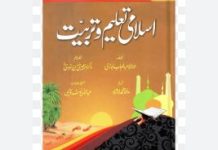Dr. AbdusSattar Abbasi
I was invited in a seminar at University of Punjab on June 20, 2025, titled, “Glass half full or half empty: Understanding social and political transformation in Pakistan through data”. The guest speaker was Mr. Bilal Geelani, the Executive Director of Gallup Pakistan. I had a mixed feeling after listening to Mr. Geelaniwho successfully showcased ‘glass half full’ with the help of data spanning last 25 years. Data is a collection of facts, opinions, figures, trends, numbers and patterns. To be data driven is generally considered good for the stakeholders to analyze the situation at hand. However, it is individual’s perspective which shapes conclusions from the data under consideration. The very first striking slide was the population growth from 1947 when we started our journey with 33 million and now being 240 million suggests that the country progressed significantly to fulfill requirements of such a huge population. But the fact which surprised me the most was the detail about life expectancy in Pakistan which was 44 years in 1960s and now it is 67 years with an exception of 74 years in the capital city of Islamabad. This improvement in the life expectancy indicates significant development in social and personal life domains. Because, life expectancy doesn’t improve with healthy intakes only, several other factors such as job opportunities, stress management, smoking patterns, health facilities and so on equally contribute to it. This improvement in life expectancy suggests advancement in several sectors. Use of tobacco has detrimental effects on health; data suggests there is significant reduction in the use of tobacco in the last 25 years from 38% users to 20% smokers today which is less than United States. But still there is a need to further curtail smoking to bring it to the level of most developed counties at least if not eliminated completely.
Alleviation of poverty and spending on education remain prominent concerns for everyone in the country. If you listen to Mr. Geelani, the situation of these two sectors is not that bleak as we usually think of. He contended that poverty reduced by 25 percentile in the last 25 years and stands at 20% as compare to 45% in the year 2000. We know that the GDP of Pakistan has grown substantially over the last three decades from 100 billion USD in 2000 to around 400 billion USD today. Now the question is where people spend their earnings and the answer is, in education especially higher education where enrolment has gone sky high from 0.3 million students in the year 2000 to 2.8 million students currently enrolled in HEIs of Pakistan. Higher education is a luxury, if there is such a huge increase in the enrolment of HEIs both in public and private universities; it means prosperity prevails in the society. Data presented by the speaker on literacy was amazing; our understanding remains that literacy rate in Pakistan in around 62%. But, he argued that the focus of our efforts during last two to three decades to improve literacy was the young population. If we look at the literacy of our population up to 25 years of age the data suggests it is 80%, which is the result of our effective policies to improve the literacy.
Data speaks truth and it suggests significant improvement in the yield of our major crops like wheat and maize. Recently we witnessed an interesting indicator of prosperity in the society especially in this region i.e. availability of the toilet to the households. According to the data almost 638 million people do not have access to the toilet in India. In Pakistan only 5% people do not have access to the toilet and that in the rural areas. Mobility stats have also significantly improved over the decades with sharp increase in motorcycle users.
Most interesting part of discussion was the political environment of the country which revolves around people less than 30 years of age. Pakistan’s 50% population is less than 30 years of age which is a real strength for the country from both economic and political point of views. In politics the age group between 18 to 29 years is shaping political discourse because they have started voting significantly during last two decades. Existing parties including PML (N) and PPP are continuously losing their vote bank for the last two decades which suggest that they probably failed to understand the sentiment of this segment of population between 18 to 29 years of age. People in this age bracket do appreciate schemes like laptops and infrastructure development but they consider it as their right. These young people aspire for identity and prominence on the global stage, they need a kind of leadership which can represent them with pride and honor. Traditional slogans have lost their attraction so does conventional political parties. There is a huge space for new thoughts, novel approaches and fresh vision to lead young population of Pakistan. PTI and TLP gained popularity in the same segment of the society. Existing parties have to completely revamp their image to accommodate thriving young population of Pakistan; otherwise new players will eventually cease their existence in coming years. This is what data suggests.
There are two factors of the portrayal of gloomy picture of Pakistan. First the availability heuristics, people believe in what they listen every day in their lives. Our mainstream media and social networking platforms both usually promote pessimism in the society broadcasting negative indicators. We hardly observe these encouraging trends in our mainstream prime hour debates. Therefore people start believing in what is available to them to watch. Second factor is the vested interest of a specific segment of the society which aims to win grants and privileges from Western countries and donors. They highlight undesirable affairs of the society to secure their interests. Therefore international audience also started to believe in the negativity as a preeminent indicator for Pakistani society. We have demonstrated our strengths to entire world during recent India Pakistan conflict with exceptional technological expertise, defeating one of the best fighter jet platforms available today. This speaks volumes about our abilities. We only need to propagate our strengths instead of indulging in untoward instances which are not uncommon to any society on this planet. Remember, glass is half full dear Pakistanis, let’s celebrate!
Dr. AbdusSattar Abbasi
COMSATS University Lahore Campus

















